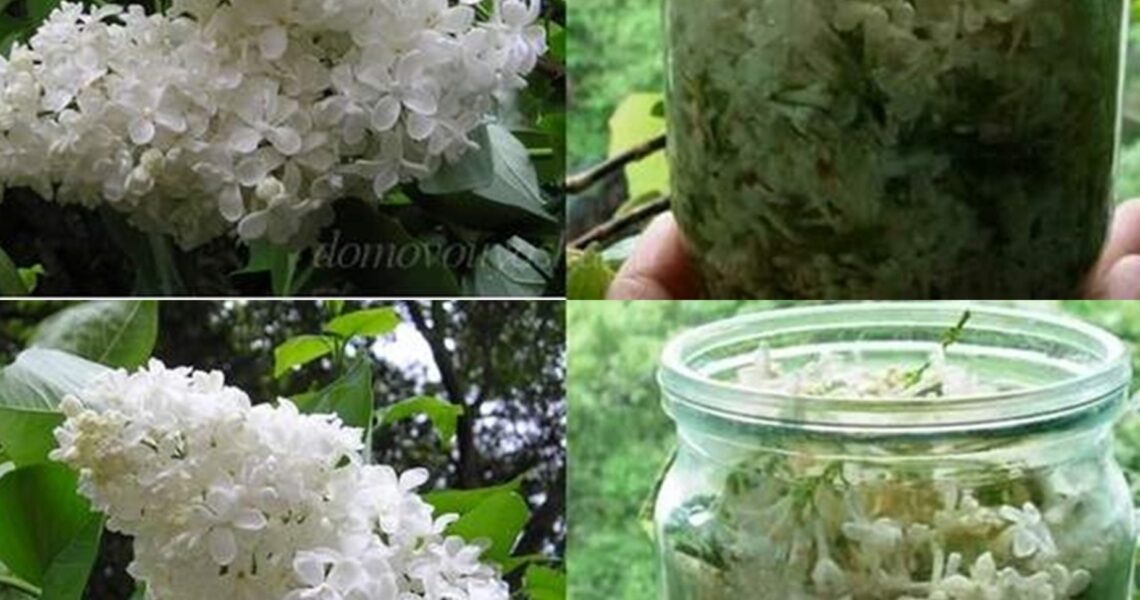Lilac helps with pain, swelling of the legs, rheumatism, neuralgia and diabetes
Lilac helps with pain, swelling of the legs, rheumatism, neuralgia and diabetes.
Lilac is a tree that reaches 6 meters in height. The leaves are ovate with pointed tips.
Blooms in purple, pink, white or red with a pleasant smell.
Lilac is an ornamental tree in gardens and parks.
Blooms from April to May.
Flowers and leaves are collected during flowering in good and sunny weather.
The flowers are dried in the shade or in the dryer at 35 °C, and the leaves at 45 °C.
The flowers are stored for 1 year and the leaves for 2 years.
They contain essential oil, glycoside springin, syringopicrin, farnesol, organic acids, etc.
The leaves contain the glycoside springin, vitamin C, etc.
Usage:
Lilac lowers the temperature and stimulates the secretion of the stomach, which improves digestion.
It is also recommended as a means of increasing appetite and regulating the menstrual cycle.
Pour 1 tablespoon of leaves or flowers with 500 ml. boiling water and leave for 1 hour.
Drink a cup of tea before meals several times a day.
The lilac is a symbol of love, found in almost every garden, but did you know that it is medicinal?
Rheumatism
Place fresh lilac flowers in a jar, cover with olive oil, close and leave in the sun for 15 days.
With this oil, massage the sick parts of the body and use for compresses.
Helps with digestive disorders. Massage the abdomen with it.
Swelling of the legs
50 grams of violet lilac flowers
50 g of ivy leaves
50 g of horse chestnut
1 liter of olive oil
Put all the ingredients in a glass jar or bottle, close and leave in a warm room for 30 days, shaking occasionally.
Improves digestion
Pour half a handful of lilac flowers with 1 liter of boiling water, leave covered for 1 hour, strain and drink 2 to 3 cups a day.
Reduces high temperature
Pour half a handful of dry lilac leaves with 1 liter of boiling water, leave for 1 hour, then strain and drink 2 to 3 cups a day.
Pour 15 to 20 grams of lilac flowers with 1 liter of boiling water, boil for 2-3 minutes, let stand for 30 minutes, then strain and drink 2 cups a day.
In addition to neuralgia, it also helps with joint pain.
And here is another option for a tincture for rubbing against spikes, arthritis and joint pain.
Take 1 tablespoon of lilac flowers (chopped) and the same amount of leaves from the plant.
Add 1 tablespoon of powdered willow bark. Pour this whole mixture with 500 ml of vodka.
Let the tincture sit for 3 hours. Then put it on the stove for a few minutes to warm up and strain.
Soak a piece of gauze in this liquid. Apply it on the affected area. Let it sit there for 2 hours.
When overtired – numbness of the legs and arms
Mix 5 tablespoons of flowers and a leaf of white lilac, put in 1 liter of brandy, close the bottle and leave in a warm place for 20 days, shaking occasionally.
Strain and massage your hands and feet daily for 10 minutes, then wrap them in woolen towels and rest for 1 hour.
Lilac oil helps with rheumatism – recipe
Place a handful of dried lilac flowers in a liter of olive oil and close the jar tightly.
Leave in a sunny place for 15 days, shaking occasionally, strain the oil through cheesecloth and transfer it to a dark bottle. Store in a dark place.
Lubricate the affected areas three times a day, in addition, drink ginger tea.
Lilac for bone pain and salt deposition
Put lilac flowers in a half-liter bottle and then pour 40% alcohol.
The bottle is left for 21 days in a dark place, then filtered.
Drink 30 drops three times a day before meals. The treatment time is 3 months.
The same tincture is rubbed into painful places and compresses are made. It is used for bone pain and salt deposition.
In diabetes
Take 2 tablespoons of lilac buds and pour them into 500 ml of boiling water.
Let them soak for an hour, then strain the liquid.
Take 1 tablespoon of it before meals. This medicine is recommended for use in diabetes
If you like the article, you can follow us and share it with your friends:
Source: vijti.com bukvarche.com
